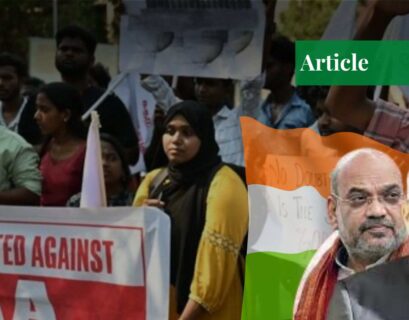Mr Muhammad Shahbaz Rajper is a freelance columnist from Sindh.
Introducing the System
As I set out to explore the enigmatic labyrinth of feudalism in Sindh, I am confronted with a rich tapestry of historical roots and deep-seated beliefs that have shaped the province’s political landscape for centuries. The feudal lords, known as Waderas, have existed in this region since time immemorial. This feudal system in Sindh has both critics and supporters.
Through the historical and critical analysis of the political history of Sindh, one can explore whether feudalism has been a source of empowerment for the people or an impediment. Feudalism after British colonialism created a Marxist-based class difference between the bourgeoisie and the proletariat. In this era, land ownership was concentrated in the hands of a few powerful landlords. Over time, this created control of the feudal elite over vast agricultural lands, fostering a hierarchical society with a limited concentration of wealth and power.
Proponents
Proponents of feudalism argue that the system provides a sense of social order and stability. They claim that the feudal lords or Waderas act as patrons of their people by supporting their communities through philanthropic initiatives such as building hospitals, mosques, schools, or charity. They also argue that the historical feudal justice system allows quick justice and resolution of conflict which helps maintain peace as well as law and order especially in rural areas where institutional powers might be limited.
However, the reality paints a different picture. While some of the feudal lords do engage in such philanthropic activities, the majority do not. They often do these activities selectively to maintain power and say in the area rather than having the intention to serve the people. Also, the patronage system can create dependence, perpetuating a cycle of subjugation where the vulnerable are forced to remain loyal to their landlords.
Critics
The critics of feudalism argue that the feudal elites have produced hindrances to the progress and development of Sindh. The concentration of land owned by feudal elites who prefer traditional farming practices to preserve their interests has stifled the fourth agricultural revolution in Pakistan. This has also hindered the farmers to produce water-friendly crops eventually leading to a major contribution to water scarcity. This results in lower productivity and less modernization of agriculture.
Furthermore, the feudal system perpetuates a lack of political representation, awareness, and access to resources for the marginalized community or the proletariats. The norm of dynastic politics in Sindh has roots in this feudalism where people inherit the political power of their ancestors along with their assets. This leads to a pool of leaders that may not be competent or committed enough to serve the people.
Consequently, the major portion of Sindh’s population is left without a voice in decision-making processes. One of the most egregious aspects of feudalism in Sindh is the persistence of bonded labor. Thousands of landless peasants, known as ‘Hari,’ are trapped in a vicious cycle of debt which compels them to work on the land of feudal elites without any escape route. They are also deprived of the right to vote because they can only vote according to the will of the feudal elite.
Although this kind of exploitation is outlawed by the government, its enforcement remains weak due to the deep-rooted influence and voter bank of these feudal lords in local politics. The feudal system has also contributed to ethnic tensions in Sindh. Landownership patterns have often favored certain ethnic groups, leading to disparities among different communities. Most of the feudal lords have control over their ethnic community which helps them fulfill their political interests. This ethnic divide has also exacerbated conflicts that divert focus from addressing broader issues of poverty, education, and infrastructure development.
Conclusion
While some proponents of feudalism argue that it offers stability and social order, it is important to recognize the darker side of the system. It has not only contributed to perpetuating inequality but also hindered progress and marginalized the vast majority population of Sindh. Empowerment can only be achieved by dismantling this system strictly, making a debt-free society, and redistributing the political representation and resources equitably among the people.
To ensure a brighter future for Sindh, it is imperative to spread awareness among people and embrace modern and democratic values while preserving the province’s rich cultural heritage.
If you want to submit your articles, research papers, and book reviews, please check the Submissions page.The views and opinions expressed in this article/paper are the author’s own and do not necessarily reflect the editorial position of Paradigm Shift.



















